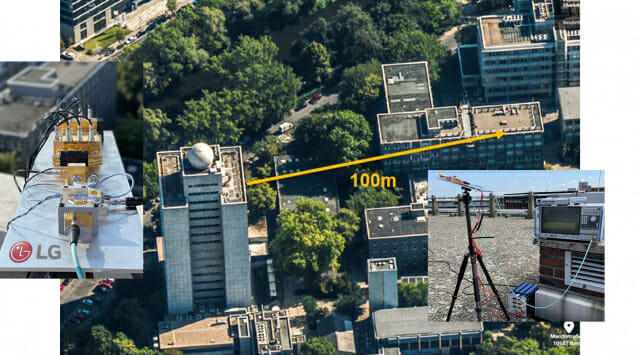ASIA ELECTRONICS INDUSTRYYOUR WINDOW TO SMART MANUFACTURING
LG Takes First Step in Race for 6G Radio Technology
As technical standards for 6G mobile communications are to be discussed and defined by 2025, LG Electronics took a first significant step in the commercialization.
The Korean electronic titan said on August 19 that it has succeeded in transmitting back and forth a series of radio data signals over a distance of 100 meters outdoor using 6G Terahertz radio spectrum.
The outdoor test-run success was made in the joint-effort with Fraunhofer Heinrich Hertz Institute of Germany.
To achieve that capability, LG has jointly developed a power amplifier with the institute, which can magnify radio signals.
The power amplifier is an inevitable technology enabler in sending back and forth ultra-short wavelength radio signals over a long distance. The shorter the radio signal wavelength, the shorter distance it can travel.
LG’s power amplifier proves that it can achieve upward of 15 decibel milliwatts, or dBm in the strength of radio signal in a range of 155-175GHz radio spectrum, which is strong enough to travel a 100 meter-long distance
The dBm is a measure of radio signal power.

The development of the power amplifier is just half the story. LG also has developed 6G adaptive beam-foaming and ultra-gain antenna switching technologies.
The adaptive beamfoaming technology is to switch the direction of beam depending on receiver location and changes in channels. The ultra-gain antenna is to transmit a multiply of output signals to antennas.
Compared with a 5G mobile communication technology, the 6G technology boasts of faster transmission speed, lower data latency, and more reliability, promising to open up the era of AI-driven IoE or Internet of Everything.
The term of IoE is to describe a brave new world where everything from human to cars to machines is connected over a ultra-high speed and intelligent mobile communication network to communicate with each other.
Global tech giants are joining the race to preempt the market.
LG is also betting on the market for the future growth, struggling to secure core 6G mobile radio communications technologies.
On the road toward that goal, LG has joined hands with state-funded KAIST or Korea Advanced Institute of Science and Technology to establish LG-KAIST 6G Research Center.
The research center announced on August 3 that it has successfully test-run a 6G beamfoaming technology using 27GHZ radio spectrum in the range of between 143GHz and 170GHz.




